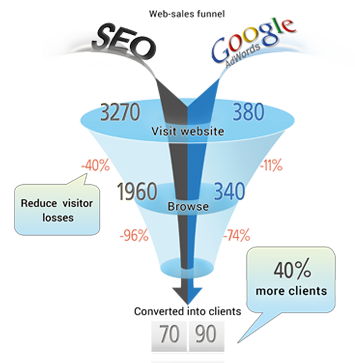Marketing automation focuses on maximizing your processes and tools to enhance user experience and boost sales. To reach this goal, your company needs a well-planned strategy for how you will reach your audience, what messages you will send them, and how this will impact their engagement. It’s not enough to just gather leads; you must also track them effectively and use advanced methods to turn them into customers.
In theory, every company would like to develop an effective procedure for turning prospects into paying customers; however in reality, there are still companies that are clueless about how they can do that or simply ignore this task altogether.

A B2B Magazine study found that 76% of marketing and sales professionals in North America are either using marketing automation software now or plan to use it soon. Many businesses, large and small, have adopted these tools to improve their lead generation and nurturing efforts. They have solid reasons for making this choice.
The Essential Benefits of Marketing Automation
Marketing automation can be used in a number of fields, from email marketing and landing page optimization to lead scoring and nurturing. It also offers extensive reporting and analytics capabilities.
Studies indicate that companies which have employed marketing automation tools for lead nurturing have experienced a staggering 451% increase in the qualified leads generated! Furthermore, their sales cycles have sped up by 70% and they have registered 54% improvement in quota achievement.
Challenges
However, marketing automation is not devoid of challenges either. In 64% of the cases, chief marketing officers have no formal process for managing their marketing automation or no such processset in place at all, even an informal one. Marketing automation can fail for a number of reasons, starting from poor quality or insufficient number of leads all the way to inadequate content and poor alignment of the sales and management processes.
In today’s fast-paced world, it is no longer enough to just have your marketing processes automated. You need to take a step further in engaging your prospective customers.
The Solution of the Future – Smart Web-Sales Automation
By 2015, the adoption rates of marketing automation solutions are expected to rise by 60%. The majority of marketing automation tools can assist you in attracting traffic to your website and improving the user experience. They provide you with web analytics and lead tracking tools, too. However, they cannot help you much in converting these leads into paying customers.
Once a visitor lands onto your website and starts browsing your products, you need to be able to track their movements and engage them proactively on a higher level. You need to be able to communicate with them in real time and help them through the purchase.
In a high percentage of the cases, potential customers browse through a company’s website and even take a purchase decision, add items to their shopping cart but get stuck on the checkout page. They may have questions about the products or the payment process but they might find it hard to find the answers or might not want to exert the effort to search for the FAQs section or write a message to the customer support service. In such cases, customers postpone their purchase, or abandon the process altogether, sometimes never to return to it again.
For such cases, there are new smartly developed solutions that combine marketing automation with conversion optimization tools. There are even smart web-sales automation solutions with superior tracking capabilities that monitor the behavior of each individual customer and in case they notice hesitation, they prompt a live chat window that offers the visitor support in answering their queries and streamlining their user experience. Companies that have employed such solutions have reported 60% increase in the number of closed deals and up to 500% increase in the ROI in some cases.
The advanced tracking and analytics options that such web-sales automation tools offer make tracking and segmenting prospects based on their interests significantly easier. Furthermore, the in-depth insight into the visitor’s experience and behavior allows the companies to develop processes and programs to target specific audiences and geographic locations and increase their client base. Some of the companies that have used these solutions have reported a 25% increase in their client base in just a few months.
The Bottom Line
Although marketing automation tools without a doubt bring a range of benefits to the companies that use them, they cannot guarantee sales conversions. Therefore, the future of these solutions lies in the symbiosis of marketing and conversion automation, superior sales intelligence and reengineering the user experience to achieve better user engagement.